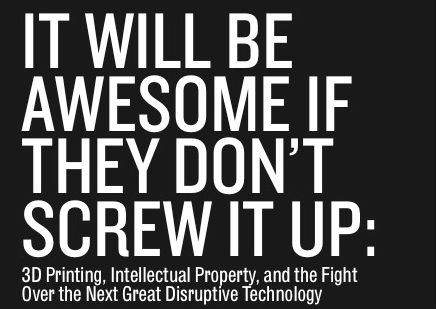Kurke and Weinburg provide a copyright primer at FARO show
ORLANDO, Fla. – If any presentation here at the FARO 3D Documentation Conference truly got attendees thinking it was Tuesday’s talk by Tom Kurke and Michael Weinberg: “It will be awesome if they don’t screw it up: Bringing IP issues in digital documentation into focus.”
Not only did they do a nice job with the riff on FARO’s signature scanning product, but they managed to drop a few jaws with what might be expected to be the rather dry subject matter of intellectual property law. Focusing on copyright statues above all else, the pair showed that many laser scanning service providers might be unwittingly violating established copyright law, especially in the scanning of buildings.
So what? Well, there is precedent that infringement on copyright can lead to a $150,000 fine per infraction, without the offended party having to even show damages, said Weinberg, who is staff attorney at Public Knowledge, a non-profit group dedicated to preserving the public’s access to the internet and knowledge in general.
“One of the things we’ve been looking at,” Weinberg said, “is when there’s democratization of 3D printing and scanning, and everyone who wants access to 3D data has access to 3D data, what happens from the intellectual property front?”
Kurke, COO of Geomagic, said he wasn’t interested in trying to put a chill on innovation, but, “I’m just saying there are issues in this space that we need to be aware of and in time the law will catch up.”
The most obvious example of the current ambiguity in the law might stem from how the U.S. government treats the exteriors of buildings. One would think that no one should be able to copyright a building’s exterior, as a building is a “useful artifact” by most people’s definition, and not a work of art or creativity, as is the general purview of copyright law. However, architects likely didn’t agree, and Congress in 1990 created a specific statute to say that building exteriors, or at least that part of them that is “creative,” are in fact copyrightable.
But, hey, laser scanning operators are safe, right, because of the exemption provided to photographers, who can safely take pictures of anything in public space? Not so fast. It isn’t clear whether laser scans can be equated with photographs as images. In fact, there’s some case law that says laser scans will be treated differently.
And, anyway, what constitutes a “building”? And what happens if a model made from a scan you did 10 years ago all of a sudden winds up on the internet for sale? Is that your fault?
It’s enough to make your head spin, and Kurke and Weinberg didn’t pretend to be giving anything close to a presentation that would leave the audience feeling safe in their copyright understanding.
“Just be aware that there are things going around that you might want to know about before you get a nasty letter from someone’s lawyer,” said Weinberg.
“As you get engaged in the scanning process,” Kurke advised, “understand who owns the copyright to the stuff that you’re scanning. Make sure the person who hired you is responsible for clearance issues … Even if you think you know, you may not know.”
Do download a free copy of Weinberg’s white paper on how 3D printing and documentation affects intellectual property law, click here.






